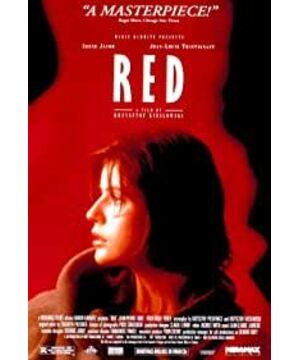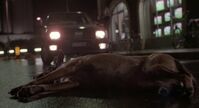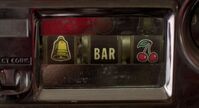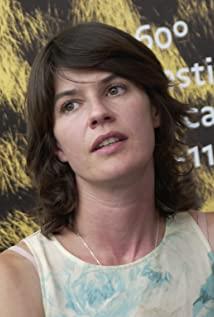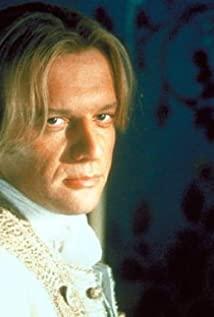The heroine of the film, Valentine, is studying in France and can only communicate with her boyfriend Michelle, who is on a business trip in the UK. Meanwhile, Valentine's neighbor is a law student named August who is in love with a girl named Karin. One night, after working part-time, Valentine's model accidentally bruised a dog. She found the dog's owner, an old judge, but he showed extreme indifference. Valentine left the dog in anger. beside him. At the same time, the emotional crisis between Valentine and her boyfriend is deepening. During one outing, the dog ran back to the old judge's house, and Valentine walked in, only to find that the old judge was listening to the calls of his neighbors, including Karin, who was in love with August. Valentine expressed great dissatisfaction. When she was going to sue the old judge, she saw the lovely little girl in the neighbor's house and gave up because she couldn't bear to break the complete family. In getting along, the old judge felt a long-lost pure emotion, and Valentine also took comfort from the old judge. The dialogue between the two, from confrontation to peace, finally found a consensus. When the old judge confesses to Valentine his past emotional setbacks, August is finding out his girlfriend is having sex with someone else. Therefore, the story forms a two-line development, which implicitly implies some kind of connection.
In Kieslowski's trilogy, red represents fraternity, which corresponds to the theme, and the tone and filter of the film are warmer. The most representative is the big poster with a red background. Valentine's eyes are looking into the distance, his lips are slightly open, and there is a trace of unease and worry in his eyes. He has a soft profile face, which gives people love as a whole and has a broad psychological reflection. . The steamy floodlight on the face reminds people of Venus, the god of love in Western oil paintings, which is a symbol of God's mercy to the world. In addition, the theme of fraternity is also manifested in many details. For example, when Valentine saw an old lady struggling to put a glass wine bottle in the recycling bin, she did not hesitate, even subconsciously, to help. This plot setting is different from the other two films of Blue, White and Red. In "Blue", Julie just enjoys her own world and lets the outside world change, while in "White", Carroll smiles contemptuously, "It turns out that she is not only so miserable. ". For another example, when a child put chewing gum in the key slit of Valentine's door, she didn't get angry, and even when her boyfriend said something excessive, she only raised her tone a little, didn't cry, let alone. A tit-for-tat shows that Valentine is very peaceful in nature and deep inside, or maybe she is willing to accept the cruelty and injustice of the world and return the reality with hope.
As in the previous two installments, red is used everywhere as a symbol. The red cloth under the telephone, the shaker in the bar, the red sweater, the entrance of the veterinary hospital, the bowling alley, the red light on the road, and the advertising posters all enrich and expand the theme of the film. These are Kieslowski's intentions on the set, and in the plot, they are represented by two-sided characters, one positive and one negative. One is the positive optimists represented by Valentine, and the other is the passive ones represented by the old judge. The development of the old judge's line was not in the form of recollection or direct disclosure, but was metaphorically borrowed from Auguste's experience. The old judge and August both had a dog, the old judge ignored the dog when it was injured, August threw the dog off the road after his lovelorn, but finally pulled the dog back to his side; August When Te saw the poster, he smiled, as if he had known Valentine, and the old judge smiled when he saw the poster; August's girlfriend gave him a pen, and when the old judge wanted to report himself , the pen was broken; both of them had the experience of having their books dropped on the ground and seeing the questions of the law test; both of them saw the scene of their girlfriend cheating at the entrance; and the old judge met Karin and her new friend in the courthouse. When they were boyfriends, the three of them made eye contact as if they had known each other before. All these can show that the old judge and August are the same person, and August is the old judge when he was young. This arrangement can avoid the embarrassment of direct narration and the stereotype of falling into the stereotypes. The overlapping of roles gives a subtle and comfortable viewing experience, and can also leave suspense.
In addition, the focus of the film is the conversation between the old judge and Valentine, and the discourse system constructed by Kieslowski in the film is slowly revealed in it. Compared with "Blue", "Red" expresses more plots and expresses more clear ideas. When Valentine responded to the old judge that if she didn't save the shepherd, she would not sleep well, the old judge asked her, "So, for whom?" Obviously, the question is, what is the use of compassion? And Valentine replied directly: "Human nature is good, these are not true, it is true, sometimes they may feel powerless." At this time, one positive and one negative began to defend themselves in terms of outlook on life and values. Until Valentine left, he asked the old judge, "I wonder if you have sympathy, the dog is about to give birth to a baby." This kind of straight-to-the-heart question made the old judge start to shake. In this episode, there is a scene where Valentine saw the sun set before going in to talk to the old judge, so the room was dark. Such a scene setting has a strong psychological statement function, implying that The values of the two people are shaken and their feelings fluctuate. When the two had reached an agreement, the old judge fixed the lamp. This is similar to the fade-out technique used in "Blue".
So the old judge, in order to test the value of this kindness, exposed himself and came to observe Valentine's reflection. Sure enough, Valentine came to express his concern to the judge. At this point, the old judge slowly became less indifferent and decadent, packed himself up, brought good wine, closed the long-abandoned door, and came to find Valentine. So he confessed his past to Valentine. This is the process of accepting injustice, and also the process of facing life again and getting spiritual rebirth. Before that, he was only willing to tell Valentine about his release of the sailor, but not about his convicted lover. This shows that the old judge was struggling. On the one hand, he hoped that he would forgive those who had committed crimes. Bad things, even people who have hurt themselves, on the other hand, they have never found the correct exit to get out of their emotional hurt, so they twist their hearts, listen to their neighbors’ phones, and invade other people’s privacy. Until Valentine's appearance, let him see a new attitude to life, just like the sun shining into the house, warm and powerful.
Through the confrontation between good and evil, the film conveys the universal truth of fraternity, and the story and expression are deeply rooted in the hearts of the people. "The closest thing to humanity is fraternity, and we can be fraternity because we always show generosity in our eyes," said Kiesvsky. In the end, Valentine and August experienced a shipwreck together, which can be regarded as a realistic metaphor. Even if we are moving forward in the direction of life, life is still troublesome, but there is always someone who can be reborn from it. Hardship and hope go hand in hand, and the future depends more on one's worldview and outlook on life.
View more about Three Colors: Red reviews


